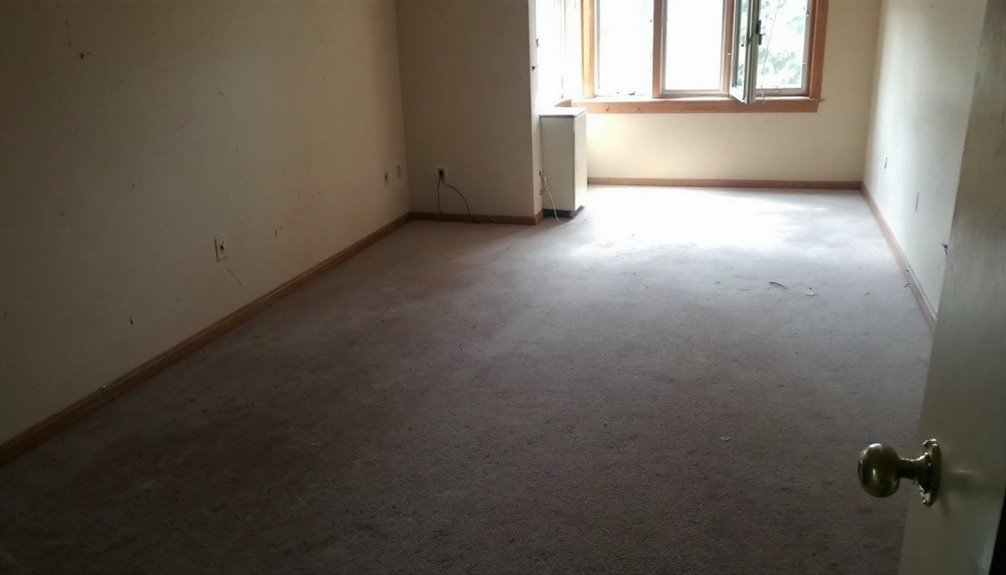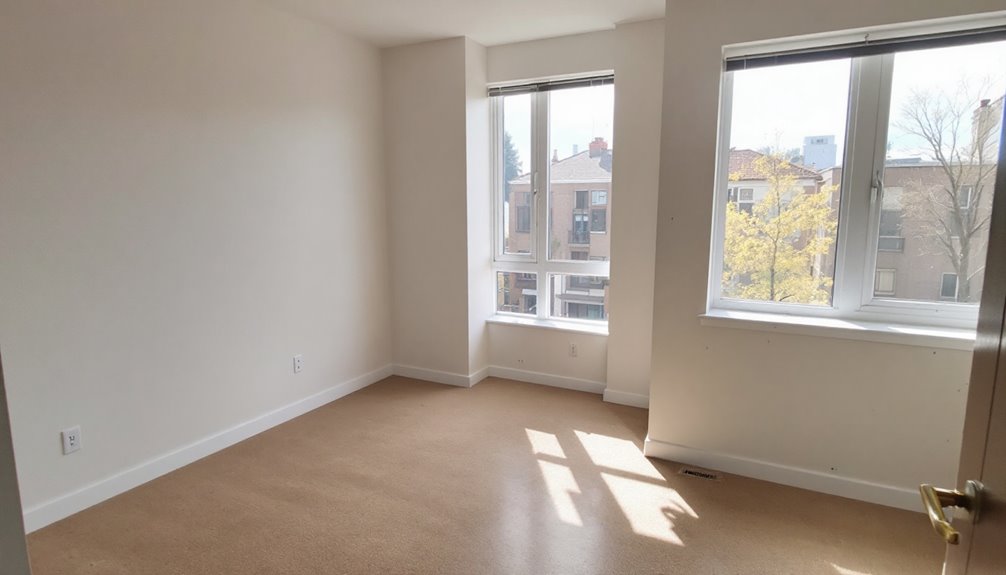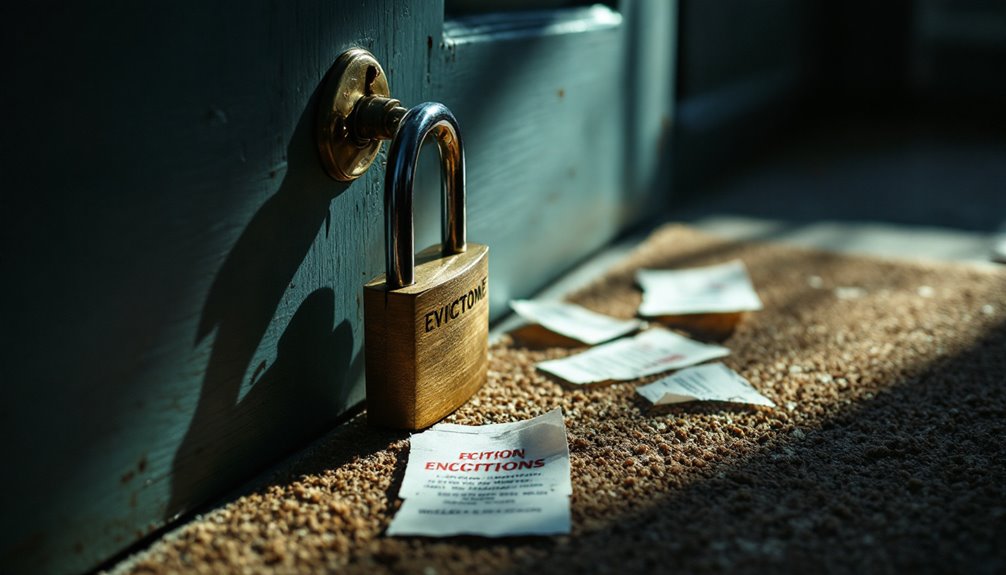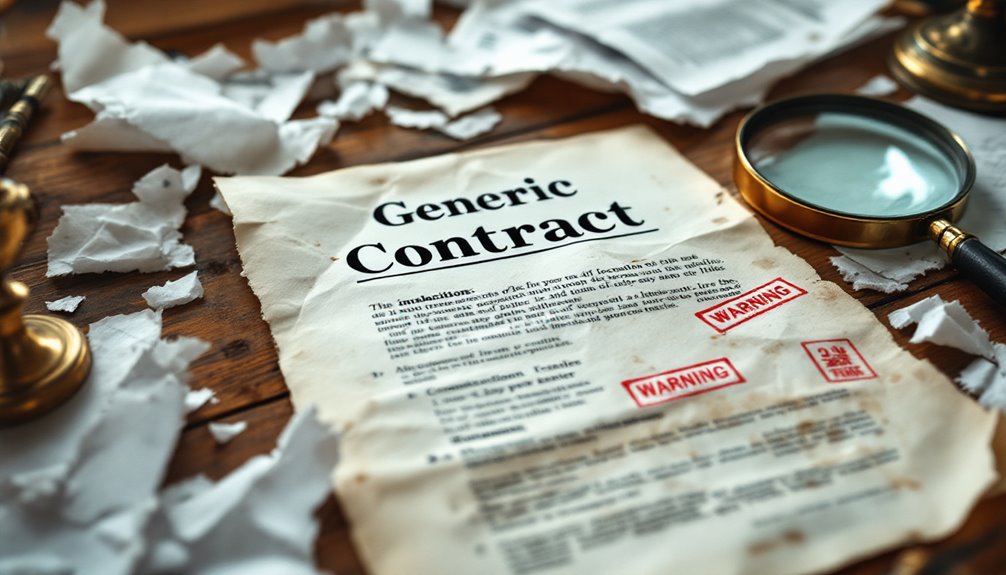House arrest with electronic monitoring offers Bay Area residents facing fifth DUI charges a potential alternative to jail time. The program combines GPS tracking, alcohol monitoring, and mandatory rehabilitation while costing 70% less than incarceration. Offenders must meet strict eligibility criteria, including stable housing and ability to pay for monitoring equipment. Success rates show 83% completion without violations, and participants maintain employment during supervision. Understanding the full requirements can help determine if this option fits individual circumstances.
Key Takeaways
- Fifth DUI offenders in California face 2-4 years prison time, but house arrest may be considered for those meeting strict eligibility requirements.
- House arrest costs $5,000-$8,000 annually versus $31,000 for incarceration, making it a cost-effective alternative for Bay Area courts.
- Offenders must maintain stable housing, working utilities, and demonstrate ability to pay for electronic monitoring equipment in the Bay Area.
- Program success rates show 83% completion without violations and significantly lower recidivism compared to traditional incarceration.
- Participants can maintain employment while completing mandatory 30-month DUI programs and regular substance abuse monitoring.
Understanding Fifth DUI Legal Consequences in California

A fifth DUI conviction in California carries severe legal consequences that far exceed penalties for previous offenses. The fifth DUI penalties include a prison sentence of 2-4 years, with a mandatory minimum of 180 days behind bars. Offenders face fines up to $5,000, plus additional penalty assessments and possible restitution payments.
The legal implications extend beyond immediate punishment. Drivers receive a 4-year license suspension, though they may qualify for a restricted license after one year. They must install ignition interlock devices on all vehicles they own or operate. The court requires completion of a 30-month DUI program, and offenders receive Habitual Traffic Offender status for three years. The conviction remains a felony permanently, with mandatory chemical testing requirements and strict probation terms including random testing and community service.
Electronic Monitoring Programs: A Closer Look
While prison sentences remain standard for severe DUI offenses, electronic monitoring programs offer courts an alternative sentencing option that balances public safety with offender rehabilitation. Modern monitoring technology includes GPS tracking, alcohol detection devices, and home detention systems that work together to guarantee compliance.
| Device Type | Primary Function | Compliance Challenges |
|---|---|---|
| GPS Tracker | Location monitoring | Signal interference |
| SCRAM Device | Alcohol detection | Skin irritation |
| Home Unit | Curfew enforcement | Power outages |
These programs typically require offenders to cover monitoring costs while maintaining employment and attending mandatory counseling sessions. Real-time data allows authorities to track violations instantly, with immediate alerts for non-compliance. When combined with substance testing and structured payment plans, electronic monitoring creates a thorough supervision framework that promotes accountability while allowing offenders to maintain employment and family connections.
Eligibility Criteria for House Arrest Options

Courts maintain strict eligibility requirements when determining if DUI offenders can serve their sentences under house arrest instead of jail time. Within the legal framework, candidates must demonstrate their offense was nonviolent and reside in the same county where the violation occurred. Basic requirements include stable housing with working utilities and no cohabitation with individuals involved in criminal activity.
The house arrest benefits extend to those who can maintain employment and afford electronic monitoring fees. Health conditions that would be complicated by jail time may strengthen eligibility. However, living situations must guarantee defendants have no access to alcohol or prohibited items during confinement. Those with dependents must prove arrangements exist for care during non-curfew hours, and stable financial resources are necessary to maintain monitoring equipment payments.
Cost Analysis: House Arrest Vs Traditional Incarceration
Beyond eligibility considerations, the financial implications of house arrest versus traditional incarceration reveal significant cost differences. A cost comparison shows that traditional imprisonment costs taxpayers around $31,000 per inmate annually, while house arrest programs typically range from $5,000 to $8,000 per year. The financial implications extend beyond direct costs, as house arrest allows offenders to maintain employment and contribute to the economy.
Key financial takeaways:
- House arrest participants often remain employed and pay taxes, reducing government welfare spending
- Electronic monitoring costs 70% less per day than traditional incarceration
- Lower recidivism rates under house arrest (18% vs 67%) translate to long-term societal savings
These figures suggest house arrest offers substantial cost benefits while maintaining public safety standards.
Bay Area County-Specific Monitoring Requirements

The Bay Area's nine counties maintain distinct monitoring requirements for DUI house arrest programs. For individuals facing a fifth DUI conviction within 10 years, mandatory jail time applies unless specific mitigating circumstances exist to justify house arrest instead.
The monitoring technology varies by county, but all programs must comply with basic legal implications regarding supervision. Key exemptions exist for certain criminal offenses, specifically those falling under PC 1192.7 (rape) or PC 667.5(c) (sodomy/lewd acts). These individuals are automatically disqualified from house arrest consideration. Additionally, anyone with an active PC status is ineligible for the program. Counties regularly update their monitoring requirements to guarantee compliance with state regulations while maintaining public safety standards through appropriate supervision methods.
Mandatory Rehabilitation Components
DUI offenders under house arrest must participate in daily recovery programs that combine substance abuse counseling and sobriety monitoring. Treatment centers track each participant's progress through electronic reporting systems that document attendance, drug test results, and behavioral changes. Courts review these milestone reports to determine if offenders are meeting rehabilitation requirements or need program adjustments.
Daily Recovery Program Requirements
Successful rehabilitation during house arrest depends heavily on a structured daily recovery program with mandatory components. The program integrates daily accountability strategies through intensive therapy sessions and monitoring protocols. Offenders must engage in therapeutic group dynamics while maintaining strict schedules for individual counseling and medical supervision.
Key daily requirements include:
- Participation in supervised group therapy sessions addressing substance use triggers and recovery challenges
- Completion of cognitive-behavioral therapy focused on DUI prevention and relapse management
- Regular check-ins with probation officers and submission of progress reports documenting therapy attendance
These structured components guarantee participants remain committed to their recovery journey while under house arrest, with medical professionals and counselors tracking their progress through detailed documentation and evaluations.
Treatment Milestone Tracking Systems
While offenders serve their house arrest sentences, an extensive milestone tracking system monitors their progress through mandatory rehabilitation components. The system uses standardized questionnaires, clinical assessments, and weekly self-reporting logs to evaluate treatment compliance. Regular drug testing, typically conducted at least once per week, verifies sobriety.
Participants move through three main phases, each with specific requirements. Phase I focuses on stabilization with daily journals and frequent self-help meetings. Phase II emphasizes employment and financial responsibility. Phase III includes educational requirements and reduced court appearances. Progress tracking includes documented attendance at therapy sessions, sponsor verification, and completion of community service hours. Success metrics rely on objective data like laboratory-confirmed drug screens, breathalyzer results, and electronic monitoring reports.
GPS Tracking Systems and Compliance Protocols
GPS tracking systems form the backbone of modern house arrest programs by providing authorities with continuous location data of DUI offenders. The monitoring equipment sends immediate alerts if participants leave approved zones or tamper with their devices, allowing for quick response from law enforcement. Regular maintenance checks and battery management are required to guarantee reliable tracking, with offenders typically responsible for keeping their devices charged and functional.
Real-Time Location Monitoring
As courts seek alternatives to jail time for DUI offenders, real-time location monitoring has emerged as a reliable supervision method. Modern GPS tracking systems provide location accuracy through satellite signals, cellular towers, and Wi-Fi networks, allowing officers to monitor offenders' movements 24/7.
Key features of real-time tracking include:
- Waterproof ankle devices that require daily charging and are tamper-resistant
- Immediate violation alerts when offenders leave approved areas or try to remove devices
- Satellite-based precision using atomic clocks for exact positioning
This technology proves especially effective for high-risk supervision cases, with studies showing that monitored DUI offenders maintain compliance rates above 85%. The combination of continuous tracking and instant alerts helps guarantee public safety while offering a viable alternative to incarceration.
Alert Response Protocols
How do monitoring centers handle GPS violations for DUI offenders under house arrest? Alert response systems operate 24/7, with monitoring centers receiving instant notifications when offenders leave approved zones or tamper with their devices. For repeat DUI cases, these alerts receive priority attention due to public safety concerns.
The alert response process relies on cellular networks to transmit real-time location data and violation notifications. When violations occur, automated alerts are immediately sent to probation officers and law enforcement via SMS or email. Compliance monitoring includes tracking unauthorized movements, device tampering, and system malfunctions. This thorough oversight has proven effective, reducing supervision failures by 31% compared to traditional methods. The system's ability to detect and respond to violations quickly helps guarantee offender accountability and community safety.
Equipment Maintenance Requirements
The success of house arrest monitoring systems depends heavily on proper equipment maintenance and upkeep. Regular maintenance schedules guarantee equipment longevity and reliable monitoring of DUI offenders under house arrest. Both GPS tracking devices and SCRAM alcohol monitoring systems require specific care protocols to function effectively.
Key maintenance requirements include:
- Battery management with scheduled replacements every 12-18 months for GPS devices and annual checks for SCRAM units
- Daily verification of tracking signals and alcohol monitoring accuracy
- Weekly hardware inspections of straps, sensors, and other components
These maintenance protocols help prevent system failures and guarantee continuous monitoring. Cleaning procedures and remote software updates further support device reliability, while regular sensor calibration maintains the accuracy needed for legal compliance.
Probation Terms and Supervision Standards

People sentenced to house arrest for DUI offenses must comply with strict probation terms and supervision standards that monitor their location, sobriety, and daily activities. Probation challenges include maintaining constant compliance with electronic monitoring devices while balancing approved activities like work and medical appointments. The monitoring effectiveness relies on a combination of GPS tracking, SCRAM devices, and random check-ins.
| Supervision Type | Requirements |
|---|---|
| Location Monitoring | GPS ankle bracelet tracking |
| Sobriety Checks | SCRAM device, random testing |
| Activity Verification | Probation officer visits |
| Communication | Automated check-in calls |
Violations can result in immediate consequences, ranging from warnings to full revocation of house arrest privileges. Offenders must respond promptly to automated check-ins and maintain all monitoring equipment properly to avoid technical violations that could jeopardize their alternative sentence arrangement.
Sober Living Integration With House Arrest
DUI offenders in sober living must follow strict daily schedules that include house chores, curfews, and monitored activities. Residents are required to attend regular 12-step programs and group therapy sessions as part of their recovery process. These structured requirements work alongside GPS monitoring and substance testing to help guarantee program compliance while under house arrest.
Daily Structure Requirements
Successful house arrest programs combine strict daily schedules with sober living requirements to help offenders maintain sobriety and comply with court orders. Daily accountability strategies include electronic monitoring through ankle bracelets and mandatory sobriety checks, while structured recovery routines merge with residential requirements.
Key components of the daily structure include:
- Fixed curfew times requiring return to approved residence by designated hours
- Regular check-ins with probation officers through unannounced home visits
- Scheduled participation in court-mandated treatment programs and work duties
The integration of GPS tracking and SCRAM devices guarantees participants follow their prescribed schedules. This thorough approach combines movement restrictions with sobriety monitoring, creating a framework that supports recovery while maintaining public safety through constant supervision.
Support Meeting Attendance Rules
Building on the structured daily requirements, support meeting attendance forms a key pillar of house arrest programs for DUI offenders. Courts mandate participation in approved programs like Alcoholics Anonymous or state-certified DUI education sessions, where support group dynamics play a crucial role in recovery.
Offenders must follow strict documentation procedures, logging meeting schedules with probation officers and adhering to pre-approved travel routes. Meeting facilitation techniques combine substance abuse counseling with behavioral modification, while GPS ankle monitors guarantee participants stay within designated zones. Integration with sober living programs provides additional accountability.
Violations trigger a tiered response system, starting with warnings and counseling, progressing to increased monitoring, and potentially resulting in jail time for repeated non-compliance. Cross-verification between meeting logs and facility records maintains program integrity.
Financial Obligations and Payment Plans

Managing the financial obligations of a third-offense DUI house arrest involves substantial costs across multiple categories. Offenders face financial consequences ranging from court fines to ongoing program expenses. Courts typically offer payment plan options to help manage these costs, with installment arrangements spanning 30-90 days post-sentencing.
Key expenses include:
- Base fines and court fees: $2,600-$2,769
- DUI school enrollment: $2,000-$3,000
- Ignition Interlock Device: $1,500-$2,000 annually
These costs are separate from license reinstatement fees, SR22 insurance requirements, and monitoring equipment charges. While payment plans can help spread out expenses, failure to meet financial obligations may result in probation violations or warrant issuance. Most courts require either an upfront deposit or structured monthly payments to maintain compliance with program requirements.
Legal Advocacy for Alternative Sentencing
Legal advocacy in DUI cases involves strategic planning to secure house arrest as an alternative to jail time. Defense attorneys typically present mitigation packages that emphasize rehabilitation focus, stable employment, and family responsibilities. They also challenge evidence related to BAC thresholds and accident severity to strengthen their case for alternative sentencing.
A key strategy involves requesting diversion programs and proposing electronic monitoring options that reduce recidivism risks. Attorneys often highlight opportunities for restorative justice, such as participation in DUI victim impact panels or community service. Success in securing house arrest depends on demonstrating the offender's willingness to engage in treatment programs and meeting specific eligibility criteria, including limited prior DUI convictions and absence of serious accidents or injuries.
Success Rates and Program Effectiveness

Recent data shows that electronic monitoring programs for DUI offenders achieve significant success, with 83% of participants completing their terms without violations and 84% avoiding new arrests during monitoring. The cost savings are substantial, with EM programs costing 48% less than traditional incarceration while delivering better outcomes for participants. Most importantly, the long-term impact is clear – DUI repeat offense rates dropped by 51% among program graduates over a five-year period.
Recidivism Reduction Statistics
Studies consistently show that house arrest programs outperform traditional incarceration in reducing repeat DUI offenses. Electronic monitoring has proven particularly effective, cutting reoffending rates from 58% to 42% compared to prison sentences. Recidivism trends indicate sustained success, with monitoring effectiveness extending up to 8 years for offenders under 30.
Key statistics demonstrate the program's impact:
- Nonresidential house arrest programs achieve 91.8% success rates versus 73.8% for residential treatment centers
- Participants show a 16 percentage point reduction in recidivism-related costs compared to incarceration
- California's three-year recidivism rate dropped to 41.9% in 2018-19, with house arrest participants maintaining consistently lower rates than those serving jail sentences
This data supports house arrest as a viable alternative for repeat DUI offenders.
Cost-Benefit Analysis Results
Success rates and financial outcomes demonstrate clear advantages of house arrest programs over traditional incarceration for DUI offenders. The cost savings are substantial, with electronic monitoring costing $13,000 annually per offender compared to $106,000 for prison incarceration in California. Offenders typically cover their own monitoring expenses, reducing taxpayer burden.
Community benefits extend beyond financial considerations. With 75% of participants maintaining full-time employment, local economies remain stable. The program achieves 95% compliance rates using GPS and RF devices, while reducing jail overcrowding by nearly 50%. Family connections improve, as cohabitation rates increase by 45% during home confinement. The system also promotes rehabilitation, with 60% of offenders completing substance abuse treatment and contributing over 1,000 hours of community service annually.
Impact on Employment and Daily Life
The impact of house arrest on employment and daily life creates considerable challenges for DUI offenders trying to maintain normalcy. While this alternative to incarceration allows individuals to continue working, they face strict employment challenges and daily life adjustments that affect their routines and financial stability.
- Mandatory court appearances, treatment programs, and electronic monitoring fees create both scheduling conflicts and financial burdens
- Travel restrictions and vehicle impoundment force reliance on public transportation or ride-sharing services for commuting
- Professional licenses may be suspended or revoked, limiting career options and requiring lengthy reinstatement processes
Job retention becomes particularly difficult as employers may terminate employment due to excessive absences or liability concerns. Additionally, curfew requirements and GPS monitoring restrict non-work activities, considerably impacting family responsibilities and social interactions.
Treatment Program Partnerships

Effective treatment program partnerships serve as a cornerstone of house arrest programs for DUI offenders, combining monitoring with rehabilitative support. San Francisco's Alternative Sentencing Program demonstrates how treatment accessibility improves through partnerships with social service agencies, creating a thorough support network.
| Program Type | Key Features |
|---|---|
| Inpatient Rehab | 24/7 supervision, intensive support |
| Outpatient Care | Flexible scheduling, home-based |
| Sober Living | Community support, change assistance |
| Counseling/AA | Regular meetings, peer support |
Program accountability is maintained through mandatory reporting from treatment providers to probation officers. Courts require participation in state-approved rehabilitation networks, while mentorship programs aid in community reintegration. This integrated approach combines mental health services, housing assistance, and adult education to address the root causes of DUI behavior.
Transitioning From Monitoring to Regular Probation
Moving from house arrest to regular probation requires offenders to clear several key hurdles. Probation officers carefully evaluate adjustment challenges by looking at the offender's compliance history, employment status, and behavior in the community. The shift involves meeting strict probation expectations while demonstrating continued progress in substance abuse treatment.
Transitioning from house arrest requires proving stability through consistent employment, clean drug tests and positive community behavior.
Key adjustment requirements include:
- Completing all mandatory house arrest terms, including substance abuse evaluations
- Maintaining consistent employment or school attendance without violations
- Passing regular drug screenings and attending all scheduled check-ins
Once approved, offenders gain more freedom for social activities but must still follow a standard 12-month probation period. Any violations during this phase can trigger sanctions, from increased monitoring to full revocation of probation privileges and possible resentencing.
Frequently Asked Questions
Can I Travel Out of State While Under House Arrest Monitoring?
Interstate travel while under house arrest is generally not permitted without prior written approval from the court or probation officer. Most house arrest programs have strict travel restrictions that limit movement to designated local areas. GPS ankle monitors track location and alert authorities if someone exits allowed zones. While exceptions may be granted for medical emergencies or court appearances, unauthorized out-of-state travel typically results in serious violations and penalties.
What Happens if There's a Medical Emergency During Restricted Hours?
During house arrest, medical emergencies that are life-threatening allow immediate departure from confinement. The person must notify authorities within 24-48 hours and provide documentation from the hospital. For non-life-threatening situations, they should contact their probation officer first. All emergency departures are tracked through electronic monitoring devices, and proper documentation must be submitted afterward to avoid violations. Failing to follow these protocols could result in serious consequences.
How Are Intimate Partner Visits and Relationships Handled During House Arrest?
Intimate partner visits during house arrest require pre-approval from supervision authorities. Partners must undergo background checks and verify their relationship status. While visits are allowed during approved hours, they must comply with strict monitoring protocols and curfews. No overnight stays are permitted. Relationship dynamics are closely observed by probation officers through regular check-ins and assessments. Any violation of these rules can result in immediate program termination.
Can I Have Guests Over During Monitored Hours at My Residence?
Studies show that over 80% of house arrest programs require advance visitor approval to maintain monitoring compliance. The guest policy during monitored hours typically allows visits from immediate family members and pre-approved guests only. Visitors must be cleared through the supervising officer beforehand, and visits are restricted to designated times. Having unauthorized guests can result in serious violations and potential revocation of house arrest privileges.
What Accommodations Exist for Parents Who Need to Attend Children's Events?
Parents under house arrest can request parenting flexibility to attend important children's events. Court-approved activities like school functions, graduations, or educational programs require advance notice and proper documentation. Event supervision is maintained through GPS monitoring and probation officer verification. Parents must submit formal requests at least 72 hours before the event and provide proof of their required attendance. All activities must align with court-ordered terms and monitoring requirements.
Conclusion
Electronic monitoring and house arrest programs in the Bay Area offer a light at the end of the tunnel for fifth-time DUI offenders. While not a perfect solution, these alternatives help reduce prison overcrowding and allow offenders to maintain employment and family connections. Success rates show promise, especially when combined with treatment programs. For many, this option provides the structure needed to get back on track while protecting public safety. Judges often consider these alternatives when effective defense strategies in Bay Area courts emphasize rehabilitation over incarceration. By demonstrating a commitment to recovery and accountability, offenders may have a better chance of securing a reduced sentence. Ultimately, balancing public safety with opportunities for rehabilitation can lead to more positive long-term outcomes. Moreover, education on the legal system, including understanding their Miranda warning rights in the Bay Area, is crucial for offenders as they navigate their rehabilitation journey. This knowledge empowers them to make informed decisions and enhances their accountability. Additionally, community support programs can further bolster these efforts, providing a network of resources that encourages positive lifestyle changes and decreases the likelihood of reoffending.























































